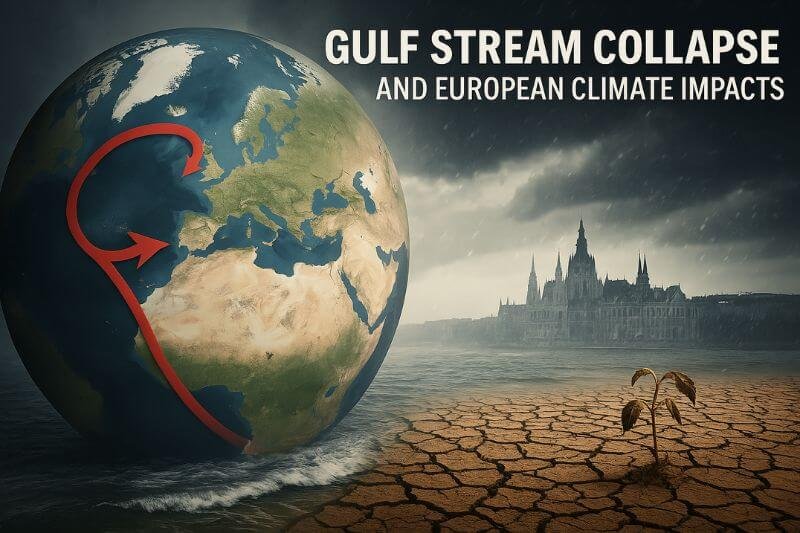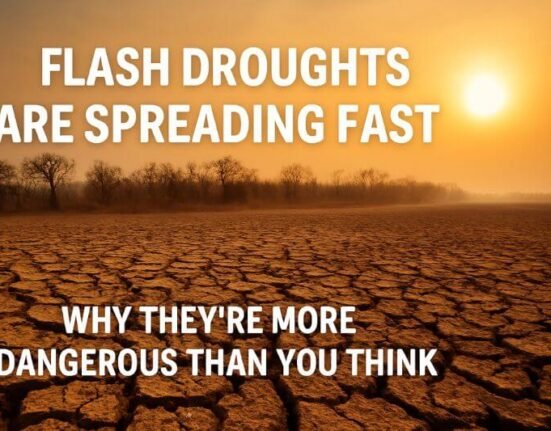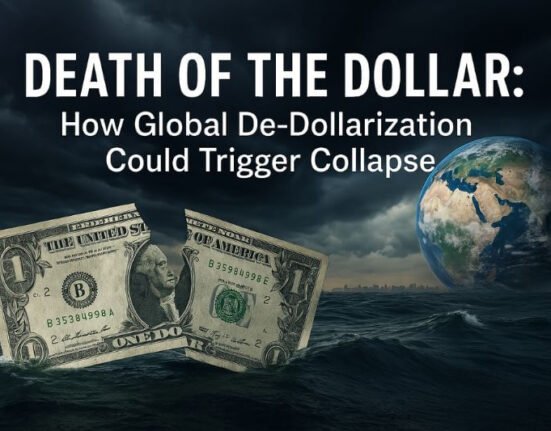A Slow-Moving Global Threat
The idea of the Gulf Stream collapse once seemed like science fiction—an extreme scenario discussed only in academic circles. But in recent years, climate models and real-world measurements have begun to converge around a worrying conclusion: the Atlantic Meridional Overturning Circulation (AMOC), of which the Gulf Stream is a critical component, is slowing down, perhaps faster than anticipated.
This slowdown doesn’t just mean changes in the ocean. It could result in catastrophic disruptions to the climate of Europe, reshape agriculture, displace populations, and challenge the survival strategies of entire regions. In this article, we examine the mechanics of the Gulf Stream, the science behind its weakening, and the potential consequences of its collapse—especially for Europe.
What Is the Gulf Stream and Why Does It Matter?
A Climate Engine in Motion
The Gulf Stream is part of a much larger ocean system known as the Atlantic Meridional Overturning Circulation (AMOC). This system transports warm, salty water from the tropics northward into the North Atlantic, where it cools, sinks, and flows back southward in the deep ocean.
This circulation helps regulate the climate by redistributing heat across the planet. It’s the reason Western Europe enjoys relatively mild winters compared to other regions at similar latitudes, such as Canada or Russia.
The Delicate Balance
The AMOC depends on a fragile balance of temperature and salinity. If this balance is disturbed—for instance, by large quantities of cold freshwater entering the North Atlantic from melting Greenland ice—it can weaken or even stop altogether. That’s where things start to get dangerous.
What the Science Says: Are We Headed for Collapse?
Evidence of Slowdown
Multiple peer-reviewed studies now show that the AMOC is at its weakest point in more than 1,000 years. Satellite data, ocean measurements, and climate models all confirm that the flow of the Gulf Stream is slowing down. Some estimates suggest a 15% weakening since the mid-20th century.
Tipping Points
In climate science, a tipping point refers to a threshold beyond which changes become irreversible. The collapse of the Gulf Stream is considered one of the most serious climate tipping points. If the AMOC were to shut down completely, the resulting changes could last for centuries—or even millennia.
A 2021 study published in Nature Climate Change suggested that the AMOC may be closer to collapse than previously believed. Once this system tips, the shift could be abrupt and uncontrollable.
Consequences for Europe: A Looming Climate Disaster
Colder Winters and Hotter Summers
Paradoxically, even as global temperatures rise, much of Europe could experience colder winters if the Gulf Stream collapses. Northern and Western Europe would no longer benefit from the moderating effects of warm ocean currents, leading to deeper cold snaps and more snowfall.
In contrast, summers could become drier and hotter, particularly in Southern and Eastern Europe. A disrupted Atlantic circulation means jet stream patterns could shift, creating long-lasting high-pressure systems, droughts, and heatwaves.
Rising Sea Levels on the Atlantic Coast
When the AMOC weakens, it causes water to pile up along the U.S. East Coast and parts of Western Europe. A full collapse could lead to regional sea-level rise of up to 50 centimeters (20 inches)—on top of global sea-level rise caused by melting ice.
Shifting Rainfall Patterns and Agricultural Disruption
The Gulf Stream helps maintain the seasonal monsoons in Africa and stabilizes weather systems across Europe. A breakdown would mean unpredictable and extreme weather patterns, endangering crops and water supplies.
Staple crops like wheat, maize, and barley could face dramatic yield drops in key agricultural zones of France, Germany, Italy, and Spain. The cost of food and water could skyrocket.
Mass Migration and Social Instability
Regions affected by drought, food shortages, and flooding will see rising numbers of climate migrants. European nations may face new waves of internal and external migration, stressing infrastructure, healthcare, and social systems. This could in turn lead to political instability, nationalism, and the erosion of social cohesion.
How Close Are We to a Collapse?
The Uncertain Timeline
Scientists can’t say with certainty when the Gulf Stream might collapse, but many agree that the risk is no longer theoretical. Projections suggest a possibility of significant weakening or shutdown between 2025 and 2100, depending on emissions and feedback loops.
The most troubling aspect? We may already be past the point of no return—and wouldn’t even know until it’s too late.
Survival Implications: How to Prepare for a Gulf Stream Collapse
While individuals can’t prevent large-scale climate shifts, preparedness is possible—and necessary. Here are key areas to focus on:
1. Water Independence
Regions experiencing longer droughts and irregular rainfall will need to secure independent water sources. Rainwater collection systems, greywater recycling, and solar-powered purification setups will be vital.
2. Food Security and Local Resilience
Start building community-supported agriculture (CSA), permaculture gardens, and food cooperatives. Invest in non-perishable food reserves, drought-resistant crops, and vertical farming systems to reduce dependency on global supply chains.
3. Energy Resilience
With changing wind and solar patterns, energy grids may become unstable. Decentralized, off-grid systems—especially solar+battery setups—will help households and communities maintain access to power.
4. Economic Preparedness
Climate-driven disruption could lead to inflation, unemployment, and shortages. Convert part of your savings into tangible assets (tools, solar panels, water filters, food reserves) and consider bartering and local trade networks as backup systems.
5. Migration and Relocation Planning
Some areas may become uninhabitable due to heat, flooding, or drought. Create an evacuation or relocation plan for your family, especially if you live in coastal or low-lying regions.
What Governments and Communities Should Do
Invest in Adaptation Infrastructure
Flood barriers, sea walls, climate-resilient housing, and irrigation systems must be prioritized. Public policies should encourage sustainability, not only mitigation.
Strengthen Emergency Response Systems
Develop more robust civil defense strategies. Include climate disaster scenarios in military and public planning. Train local emergency volunteers and stockpile essential supplies at the municipal level.
Educate and Inform the Public
The more informed the population is, the better their response will be. Governments, schools, and media must work together to ensure people understand the risks and know how to prepare.
A Time for Vigilant Preparedness
The Gulf Stream collapse is no longer just a distant possibility—it’s a real and potentially imminent threat. Its consequences for Europe and beyond could be catastrophic: colder winters, drier summers, sea-level rise, crop failures, and mass migration.
While governments must act on global emissions, individuals and communities can—and must—prepare. The key is to start now: securing food, water, energy, and relocation plans before the system reaches its tipping point.
The time to worry has passed. The time to prepare is now.















